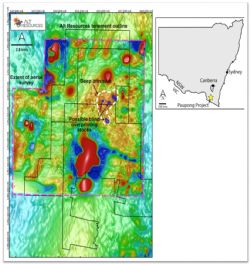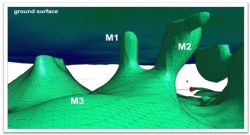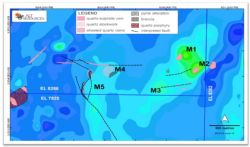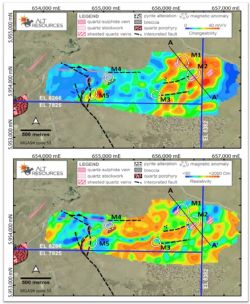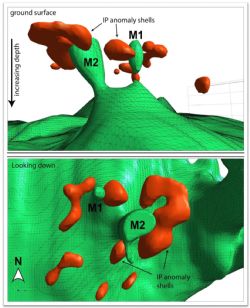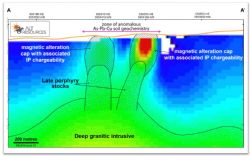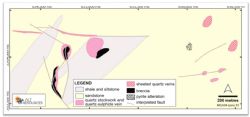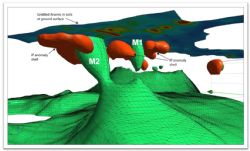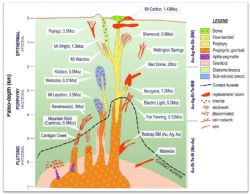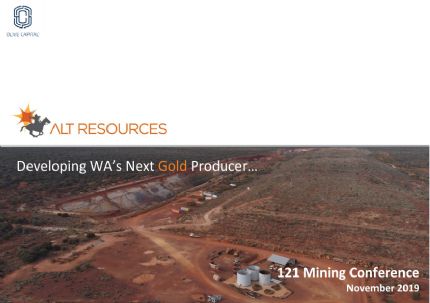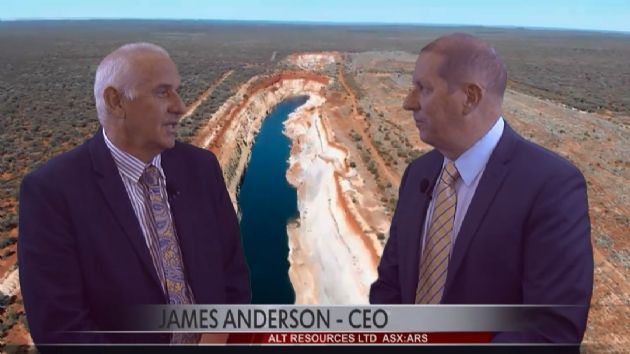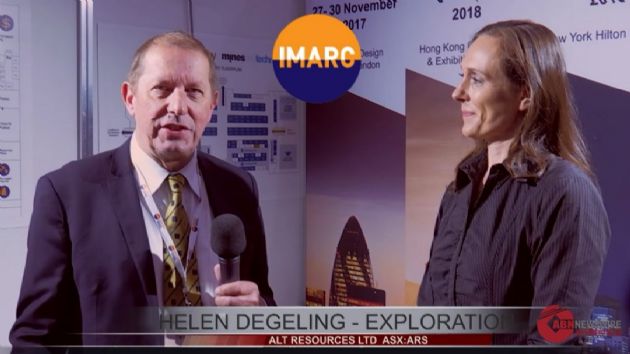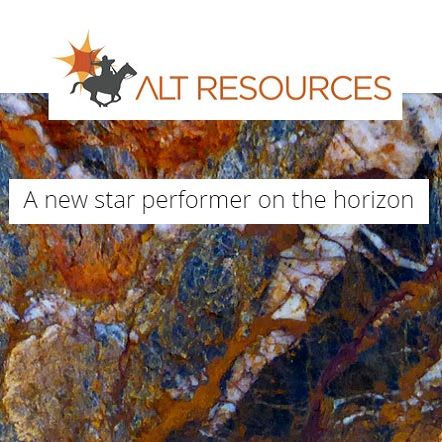 Major New Intrusion-Related Gold Targets Identified at Paupong Project, NSW
Major New Intrusion-Related Gold Targets Identified at Paupong Project, NSW
Canberra, May 24, 2016 AEST (ABN Newswire) - NSW-focused base and precious metals explorer Alt Resources Ltd ( ASX:ARS) is pleased to advise that it has taken an important step forward in the ongoing exploration of its flagship Paupong Project near Jindabyne in southern NSW. Alt has successfully defined a number of significant new intrusion-related gold targets in a newly identified area.
ASX:ARS) is pleased to advise that it has taken an important step forward in the ongoing exploration of its flagship Paupong Project near Jindabyne in southern NSW. Alt has successfully defined a number of significant new intrusion-related gold targets in a newly identified area.
Key Points:
- Major new buried intrusion-related gold exploration targets identified in a new zone (Windy Hill), adjacent to a previously explored area at Paupong.
- The targets have been identified by a combination of aerial magnetic and induced polarisation (IP) surveys, geological mapping and soil geochemistry.
- 3D modelling of geophysical data supports an interpretation of near-surface intrusions with surrounding zones of quartz vein-hosted mineralisation.
- Soil geochemistry reveals strong zonation for copper, lead, zinc and arsenic across these targets.
- Alt is seeking an amendment to its existing drilling permits to enable testing of the Windy Hill targets (following the current diamond drilling program).
- Application lodged for second round of drilling funding under the NSW Government New Frontiers Cooperative Drilling Program.
The targets have been outlined after reviewing and interpreting the results of recent extensive airborne and ground geophysical and geochemical surveys undertaken at the Paupong Project (Figure 1, see link below). These surveys were undertaken to advance the Company's exploration targeting at Paupong, and the results have been extremely encouraging, as the new targets were not evident in regional government data. Combined with the results of aggressive IP and soil survey programs, the Company has now defined a strong pipeline of substantial exploration targets which it plans to test as a priority following the current diamond drilling program.
Alt has submitted an amendment to its existing drilling permits to enable prompt testing of these targets and has also lodged an application for a second round of drilling funding under the NSW Government's New Frontiers Cooperative Drilling Program. The Windy Hill targets form the basis of this application. The recipients of the New Frontiers drill funding grant initiative will be announced by the NSW Government in July 2016.
Alt CEO James Anderson said the results of the recent geophysical surveys combined with ground-based exploration activities amounted to a significant breakthrough for the Company's exploration of the Paupong Project.
"We are now clearly seeing the benefits of undertaking large-scale survey work. The results of the past four months work are highly encouraging with cohesive results achieved over a large exploration area. The results indicate a potential near-surface intrusive source for the mineralisation, which could be a game-changer for ongoing exploration of this project."
3D Modelling
3D modelling of both aerial magnetic and dipole-dipole IP surveys has been completed, showing exceptional correlation with surface geological mapping and soil anomalism. The modelled magnetic data reveals a cluster of interpreted late stage, shallow buried intrusions beneath the new Windy Hill prospect.
The magnetic anomalies are associated with strong chargeability and resistivity highs in modelled dipole- dipole IP data. The IP anomalies form an open doughnut shape enveloping the magnetic highs and are interpreted as zones of quartz stockwork veining with sulphide mineralisation enveloping shallow buried intrusions (stocks).
The surface expression of the magnetic and IP targets is mapped as zones of quartz-sulphide veining, quartz stockwork and sheeted quartz veins, with significant areas of quartz or rock-flour supported brecciation. Portable XRF analysis of soil samples reveals copper, lead, zinc and arsenic anomalism associated with the combined geological and geophysical targets. The soil geochemistry is strongly zoned for these elements, with outer rims of elevated lead and copper, and an arsenic-rich core.
These lines of evidence lead the Company to believe that the combined geophysical, geological and geochemical anomalies represent a series of new Intrusion-Related Gold targets at Windy Hill.
Aerial Magnetic Data
The Company recently completed a 5,000 line kilometre high resolution aeromagnetic and radiometric survey across the Paupong Project area (Figure 1). Processing of the new data by ArcTan Services revealed the presence of a number of features which were not visible in the regional magnetic data previously available, and has enabled accelerated interpretation and targeting for exploration activities.
Interpretation of the newly acquired detailed aeromagnetic survey data indicates the presence of a number of late stage stocks intruding to shallow depths. The interpreted stocks occur as a cluster, and appear to postdate and penetrate a larger intrusive body located at a depth of about 400m below surface (Figure 2, see link below). The anomalies have been labelled M1 to M5 for ease of identification.
The magnetic anomalies occur beneath zones of known quartz-sulphide and quartz stockwork veining, and associated breccia zones mapped at surface (the Telegraph Hill prospect). This extends the Telegraph Hill zone by about 2km to the east where the expanded prospect is now renamed Windy Hill (Figure 3, see link below). The Company considers the younger stocks as a possible source of intrusion-related gold mineralisation at Paupong.
Dipole-Dipole IP
The magnetic anomalies have been followed up with an aggressive program of Dipole-Dipole Induced Polarization (IP) geophysics. A 20 line kilometre survey was conducted over the Windy Hill area, and merged with the smaller pre-existing Telegraph Hill IP survey. The data were inverted and modelled in 3D by Arctan Services (Figure 4, see link below).
The IP model shows very strong anomalies (~35 mv/V) associated with the M1, M2 and M3 intrusions, with the strongest responses forming a partial doughnut around M1 and M2. With the combination of chargeability and resistivity and these zones are interpreted by the Company as zones of quartz stockwork or sheeted quartz veins forming an envelope around and above the interpreted buried intrusions.
Figure 5 (see link below) shows the relationship between the magnetic and IP responses in 3D, while Figure 6 (see link below) shows a conceptual model of the system, through magnetic anomalies M1 and M2, explaining the combination of magnetic and IP responses in the subsurface.
Geology and Surface Geochemistry
Geological mapping and soil sampling were also undertaken at Windy Hill. A quartz breccia and quartz vein stockwork system were identified previously at Telegraph Hill (west of Windy Hill and now merged into one prospect). New mapping at Windy Hill itself revealed sheeted quartz veining within a variably pyrite- and sericite-altered sandstone host over an area of 0.62 km2 (Figure 7, see link below). Rock chip assays have returned results up to 0.25 ppm Au, 5.3 ppm Ag, 0.7% As, 0.2 % Cu and 0.13% Pb. The sandstone is similar to the host of quartz-sulphide mineralisation at Tom's Vein further south.
1,300 soil samples were collected during March and April 2016, over an area of ~3.2 km2. Samples were collected using a hand auger, to between 30cm and 1m depth, on a 100m x 25m grid. The samples were analysed using a NITON portable XRF. Samples which returned anomalous As, Cu, Pb and Zn were sent to ALS Laboratories for gold and other trace element analyses which are beyond the capability of the portable XRF. Arsenic (As) is an important pathfinder element, often associated with gold.
Zoned Cu, Pb, Zn and As anomalies were identified over the Windy Hill magnetic and IP anomalies (Figure 8, see link below). The relationship between geochemistry and geophysics is especially profound for magnetic anomalies M1 and M2. In this area, surface geochemical anomalism has a diameter of ~850m, and displays a distinct pattern of zonation. An As-rich core is present, with a Pb-rich western margin, and Cu+Zn-rich eastern margin.
Figure 9 (see link below) shows the complete data set (geophysical and geochemical) in 3D, focusing on the M1 and M2 anomalies. The relationship between geophysical features, both magnetic and IP, and surface geochemistry is clearly illustrated. In this case, the gridded arsenic surface is shown.
An IRGS Target Model for Windy Hill
The new, combined exploration results at Paupong clearly demonstrate that gold and associated mineralisation form part of an Intrusion-Related Gold System (IRGS). Based on current information, the locus of this system appears to be the magnetic anomalies present beneath Windy Hill.
An IRGS is a mineralised magmatic-hydrothermal system, with gold as the dominant commodity, in which there is a demonstrable genetic link to an intrusive body (see Morrison and Beams, 2015). IRG systems in Eastern Australia tend to show unusually abundant polymetallic mineral associations (Blevin, 2006, 2009), consistent with observations from the Paupong Project. Other examples include Dargues Reef, Mount Adrah in southern NSW, and Kidston, Mt Leyshon and Ravenswood in Queensland.
Surface vein sampling and drilling by Alt and JV partner GFM Exploration have shown a very strong association between gold and arsenic, copper, bismuth, tellurium and lead. The project area contains at least 15 different outcropping intrusive bodies, identified by geological mapping. Review of the new aeromagnetic data also revealed significant additional intrusions present at shallow depths, but not outcropping. The relationship between these intrusive complexes is poorly understood. They represent a range of fractionated compositions, from near unaltered gabbro to potential mineralising bodies of pervasively altered quartz porphyry.
Most features of mineralisation in the Paupong Project area strongly support an IRGS conceptual model, and provide vectors that indicate a buried but shallow intrusive source. Table 1 (see link below) gives a summary of the key characteristics of typical IRG deposits, and compares the known features of mineralisation at the Paupong Project.
Figure 10 (see link below) shows a conceptual model of an IRGS, with examples of the physical settings, geochemical characteristics and actual examples of North Queensland IRG deposits. Based on current information, Alt considers that the Windy Hill exploration targets described here correspond closely with the Mesozonal Porphyry level shown in Figure 10. Comparable Mesozonal deposits are Queensland examples Mt Leyshon and Ravenswood, both containing in excess of 3 Moz Au.
The Company intends to vigorously pursue the Windy Hill targets. An amended drilling permission has been requested of the NSW Government to allow drilling in the Windy Hill area. Furthermore, Alt have submitted an application for the second generation of exploration funding under the NSW Government New Frontiers Cooperative Drilling Program.
To view tables and figures, please visit:
http://abnnewswire.net/lnk/A9YC5848
About Aurenne Alt Resources Pty Ltd
Aurenne Alt Resources Pty Ltd is an Australian based mineral exploration company that aims to become a gold producer by exploiting historical and new gold prospects across quality assets and to build value for shareholders.
![abnnewswire.com]()
Related Companies
Social Media
Share this Article

 ASX:ARS) is pleased to advise that it has taken an important step forward in the ongoing exploration of its flagship Paupong Project near Jindabyne in southern NSW. Alt has successfully defined a number of significant new intrusion-related gold targets in a newly identified area.
ASX:ARS) is pleased to advise that it has taken an important step forward in the ongoing exploration of its flagship Paupong Project near Jindabyne in southern NSW. Alt has successfully defined a number of significant new intrusion-related gold targets in a newly identified area. 

